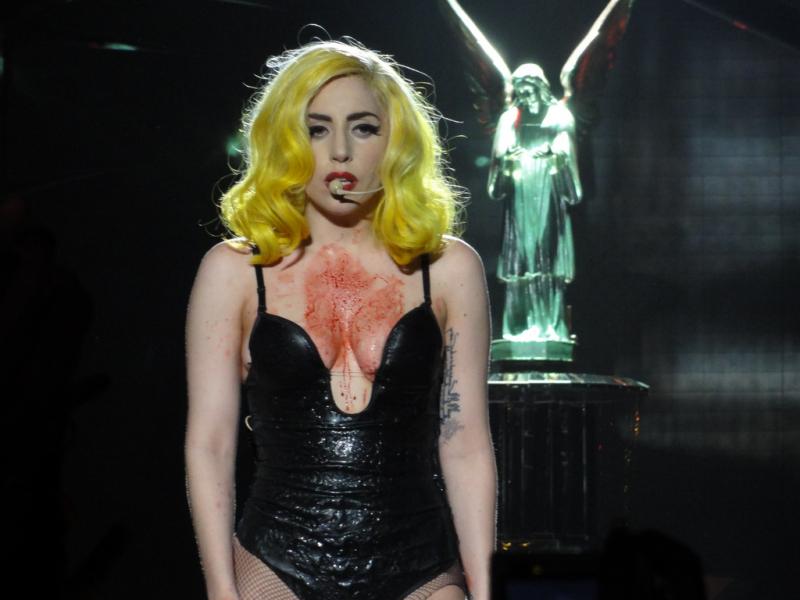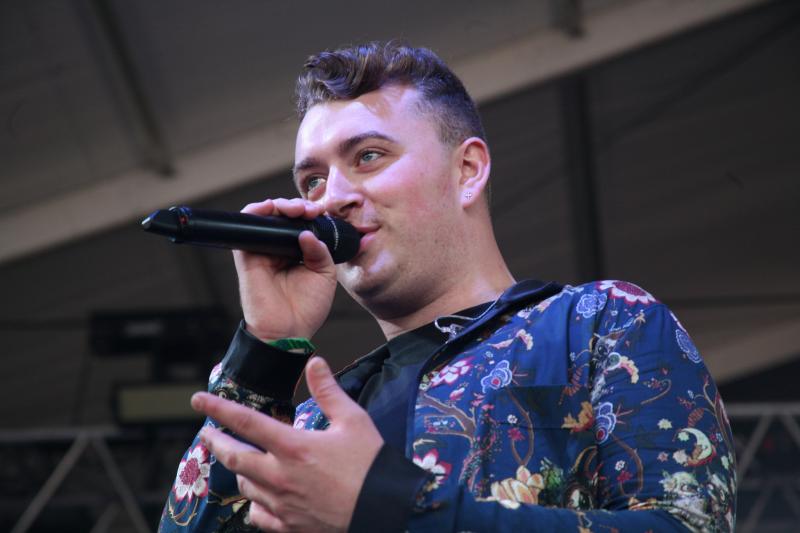Is Pop Music More Queer Today Than In The Past?
The third weekend of September, I went to the annual Sunset Strip Music Festival in West Hollywood, hoping I could write a recap of the event and enjoy my pass there. Yet as the day transitioned to night, I immersed myself in the music and people at the festival much more than I originally planned to. I could easily dance my way into any circle and feel accepted. The whole venue was free from animosity. People dressed however, danced wherever, drank whenever, smoked whatever and loved whomever.
During her performance, Tove Lo declared, “I would take all of you home if I could.” Big Freedia, an openly gay performer, invited audience members to booty bounce with him on stage. Seconds before Empire of the Sun took the stage, the mayor of West Hollywood encouraged us to “get drunk, get lucky, get laid and get home safe.”
The festival was a boiling concoction - a mish mash of different identities no one could explicitly define. All the labels - old, young, gay, straight, white, black, brown - dissipated like steam to create the melting-pot essence of West Hollywood.
All in all, the 2014 Sunset Strip Music Festival was epic. It inspired me to think about the changing nature of America’s heteronormative music industry.
The word “queer” itself is ambiguous and fluid; how can you define queer without defining what’s normal? In Playing it Queer: Popular Music, Identity and Queer World-making, Jodie Taylor poses that “queer is and has always been at odds with normal and supposedly ‘natural’ behaviour." Later, in the end of the nineteenth century, queer "soon became a pejorative term of reference to homosexuals and gender deviants,” and now since the '90s it has become "a positive epithet for gender and sexual non-normatives."
Yet it’s interesting to note that normality and queerness have potential to change. Something normal now can be queer in another time frame and vice versa.
In any case, as USC gender studies professor Alice Echols put it, “musical performance has long been an arena for gender transgression.” Androgyny is an unquestionable feature in pop music.
Every decade brings a new generation of artists who explore it. As early as the ‘50s and ‘60s, we had gender-bending idols like Elvis Presley, The Beatles and Little Richard. Then there were David Bowie and Freddie Mercury. The ‘80s gave us Kiss, Prince, Joan Jett, Michael Jackson, Elton John, Madonna and more. Marilyn Manson and Nirvana carried androgynous themes into the ‘90s.

So, I wondered, are there more queer artists and queer music today than in the past, or are there less? You could really argue for both.
On one hand, you could say that the musical environment was more androgynous in the past. During the peak of American Rock, men and women dressed interchangeably, wore dramatic makeup, and lived the freewheeling rock ‘n’ roll lifestyle. The popular style of dress and hair was unmistakably androgynous.
Though artists from past decades weren’t necessarily as public about their sexuality, they were large in number and left an indelibly queer mark on the music industry. Surprisingly, we don’t see as many drag performers like Little Richard or David Bowie in the top charts today, although Lady Gaga claims she draws inspiration from Bowie.
On the other hand, today’s music industry is far more accepting of artists with lesbian, gay, bi or trans identities. Nonheterosexual identities have progressively become normalized in the media. Artists today are often open about their sexuality, and many are active advocates for the LGBTQ community.
We also see a more diverse range of queer artists in different genres. Once predominantly heteronormative genres such as R&B, hip-hop and country now have Frank Ocean, Angel Haze and Brandy Clark, who comment on LGBTQ issues in their lyrics.
In “Thinkin Bout You,” Frank Ocean sings about falling in love with a man for the first time.
In collaboration with Sia, Angel Hayes raps about her pent-up emotions and fight towards equality in “Battle Cry.”
“Follow your Arrow,” performed by Kacey Musgraves, was written by Brandy Clark to tell youth that it’s okay to deviate from heteronormative practices.
Today’s growing acceptance of queer people and queer content in the media can be both beneficial and harmful to the queer community.
Positive effects include increasing awareness and acceptance of the LGBTQ community, inspiring and empowering queer individuals, challenging restrictive gender binaries and creating a more progressive and tolerant society.
Some negative effects could be incorrectly representing the queer community, monetizing queerness and perpetuating society’s tendency to focus on the sexuality of public idols.
We see a lot of controversy over artists who kiss people of the same sex on or off stage. Some heterosexual and homosexual people see “faking gay,” such as straight women sharing a lesbian kiss in front of an audience, as a cry for attention.

The issue with sensationalizing gays is that some artists may profit from an identity that they themselves don’t identify with—not everyone who is pro-gay is queer. Some fear that this leads to a dishonest representation of the queer experience.
READ MORE: Lesbian, Til' Graduation?
Regardless of its positive or negative effects, queer representation and androgyny in America’s music industry have shed light on the LGBTQ community and helped challenge some of America’s restrictive heteronormative structures. Still, some music genres remain predominantly heteronormative, and it will be interesting to see how these genres evolve over time.
Additionally, the music industry’s growing acceptance of queer artists introduces the public to new music they otherwise may have missed.
With every decade, we see musical performance bring something new to the industry that electrifies the public and sparks widespread controversy. Forever there will be normal, and with normal there will always be queer.
Contact Staff Reporter Kate Oh here.



